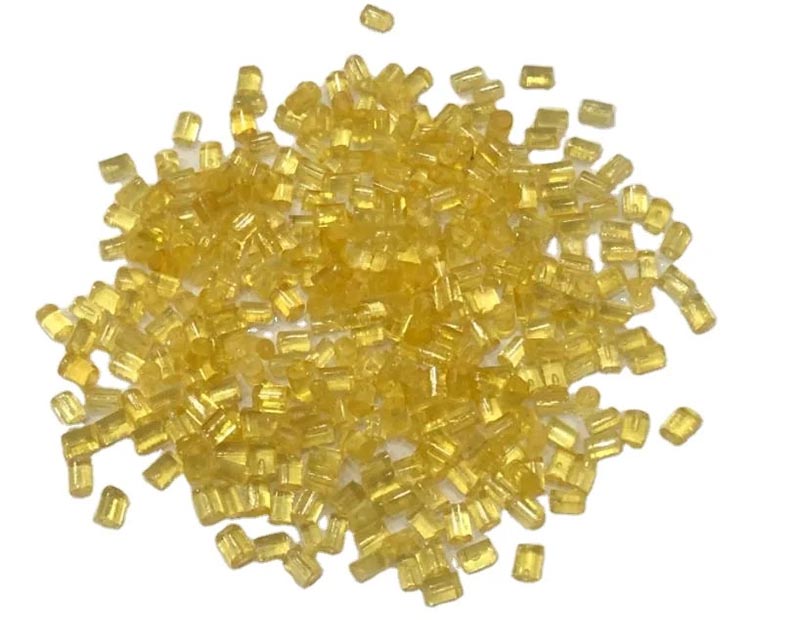Engineering plastics are a class of materials that are known for their high performance in demanding applications where standard plastics fail. Among the most commonly used engineering plastics are PEI (Polyetherimide), PEEK (Polyetheretherketone), PTFE (Polytetrafluoroethylene), and Ultem. These materials are prized for their exceptional thermal stability, chemical resistance, mechanical strength, and electrical properties. However, each of these plastics has its own set of advantages and limitations, which makes them better suited for different applications. In this article, we’ll compare PEI with PEEK, PTFE, and Ultem in key performance areas.

Thermal Stability
Thermal stability refers to a material’s ability to maintain its mechanical properties at elevated temperatures without deforming, degrading, or losing strength.
1.PEI (Polyetherimide): PEI Plastic is known for its excellent thermal stability, capable of withstanding temperatures up to 170°C (338°F) without significant loss of mechanical properties. This makes it suitable for a wide range of high-temperature applications, including automotive, aerospace, and medical devices.
2.PEEK (Polyetheretherketone): PEEK stands out for its superior thermal resistance, with a maximum continuous service temperature of 250°C (482°F). This makes it one of the best materials for extreme heat applications, such as in high-performance engineering components in the aerospace and automotive industries.
3.PTFE (Polytetrafluoroethylene): PTFE is a highly stable material at temperatures up to 260°C (500°F). While its performance at high temperatures is impressive, PTFE’s mechanical strength at these temperatures tends to be lower than that of PEI or PEEK. This limits its application in load-bearing or structural components.
4.Ultem (Polyetherimide): Ultem is essentially another brand name for PEI, and its thermal stability is identical to that of PEI. Like PEI, it can withstand temperatures up to 170°C under continuous use.
While PEEK has the highest thermal stability, PTFE also performs well at higher temperatures. PEI and Ultem are ideal for high-temperature environments but not as extreme as PEEK or PTFE.
Chemical Resistance
Chemical resistance is crucial for materials used in environments where exposure to harsh chemicals, acids, solvents, or other corrosive substances is common.
1.PEI (Polyetherimide): PEI offers excellent resistance to a variety of chemicals, including acids, bases, and hydrocarbons. However, it is less resistant to aggressive solvents such as ketones and concentrated acids. This makes PEI ideal for many industrial applications, but it may not be the best choice for environments involving highly aggressive chemicals.
2.PEEK (Polyetheretherketone): PEEK is one of the most chemically resistant plastics available. It resists a wide range of aggressive chemicals, including acids, bases, and solvents, making it an excellent choice for use in the chemical and oil and gas industries. Its chemical resistance is superior to that of PEI, allowing it to withstand harsh environments without degradation.
3.PTFE (Polytetrafluoroethylene): PTFE is known for its exceptional chemical resistance, which is virtually unmatched by other engineering plastics. It resists nearly all chemicals, including strong acids, bases, and solvents. PTFE is often used in applications where exposure to extremely corrosive chemicals is unavoidable, such as in the pharmaceutical and chemical processing industries.
4.Ultem (Polyetherimide): Like PEI, Ultem offers good chemical resistance, though it does not provide the same level of resistance to aggressive solvents as PEEK or PTFE. It works well in environments where exposure to mild acids, bases, and solvents occurs, but PTFE or PEEK may be better for harsher chemicals.
PTFE is the best option for chemical resistance, followed by PEEK, which also offers excellent resistance to most chemicals. PEI and Ultem are good choices for less aggressive environments but fall behind PEEK and PTFE when dealing with strong chemicals.
Mechanical Strength
Mechanical strength refers to a material’s ability to resist deformation or failure under load. It includes tensile strength, impact resistance, and stiffness.
1.PEI (Polyetherimide): PEI offers a high tensile strength of around 80-100 MPa and is known for its excellent dimensional stability. It is also resistant to creep (the slow deformation under load) at high temperatures, making it suitable for structural applications. While PEI is strong, its mechanical strength does not quite match that of PEEK.
2.PEEK (Polyetheretherketone): PEEK is among the strongest of all thermoplastics, with a tensile strength that can reach 100-160 MPa. It also excels in impact resistance and stiffness, making it ideal for high-load, high-stress applications such as aerospace, automotive, and heavy machinery.
3.PTFE (Polytetrafluoroethylene): While PTFE is known for its outstanding chemical resistance, it has relatively low mechanical strength. PTFE has a tensile strength of about 20 MPa, which limits its use in structural components. It is more commonly used for sealing and insulation applications rather than for load-bearing roles.
4.Ultem (Polyetherimide): Like PEI, Ultem has a high tensile strength of about 80-100 MPa, making it suitable for demanding mechanical applications. It is also highly resistant to creep, though it generally does not offer the same level of mechanical strength as PEEK.
PEEK is the strongest and most mechanically robust material in this comparison, making it the best choice for high-load and high-stress applications. PEI and Ultem offer solid mechanical properties but are not as strong as PEEK. PTFE has the lowest mechanical strength and is better suited for non-structural uses.
Applications
1.PEI is commonly used in electrical connectors, medical devices, automotive components, and industrial machinery due to its high thermal stability and good mechanical properties.
2.PEEK is ideal for aerospace, automotive, and medical implants, as well as for chemical processing environments due to its superior thermal and chemical resistance.
3.PTFE is widely used for gaskets, seals, and bearings, as well as for non-stick coatings in cooking utensils, owing to its extreme chemical resistance and low friction.
4.Ultem is typically used in medical and food processing equipment, as well as in electrical components, where both high performance and good chemical resistance are required.
Choosing between these materials depends on the specific needs of your application, including temperature resistance, strength, and exposure to chemicals. Each plastic brings its own set of advantages to the table, and understanding these differences is key to making an informed decision for your project.






